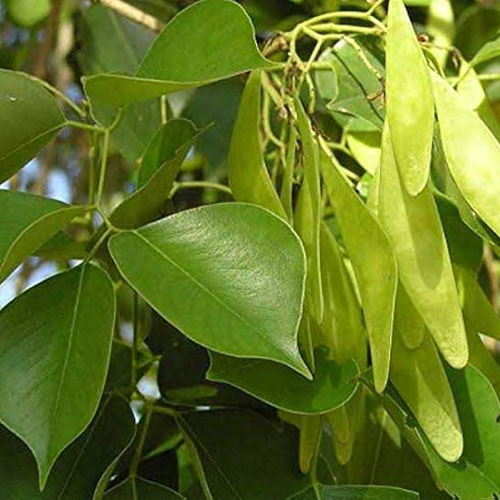Sheesham Plants
Sheesham (Dalbergia sissoo), also known as Indian Rosewood, is a deciduous tree native to the Indian subcontinent and parts of Southern Iran. Sheesham is highly valued for its durable hardwood, which is widely used in furniture, cabinetry, flooring, and musical instruments. The tree is also known for its adaptability to different soil types and climates, making it a popular choice for reforestation and agroforestry projects.
Key Features of Sheesham Plants (Dalbergia sissoo):
-
Appearance:
- Height: Sheesham trees typically grow to a height of 10 to 15 meters, but under ideal conditions, they can reach up to 25 meters or more.
- Leaves: The leaves are pinnate, consisting of 3 to 5 leaflets that are ovate and have a smooth margin. The leaves are bright green and turn yellow before falling in the dry season.
- Bark: The bark of Sheesham is light brown to dark gray and becomes rough and fissured with age.
- Flowers and Fruits: The tree produces small, fragrant, white to pale yellow flowers in clusters, usually blooming in the spring. The fruit is a flat, thin, and oblong pod containing 1 to 4 seeds.
-
Growth Conditions:
- Climate: Sheesham thrives in tropical and subtropical climates. It prefers regions with hot summers and cool winters, with a temperature range of 10°C to 40°C. The tree is drought-tolerant and can withstand periods of waterlogging.
- Soil: Sheesham is highly adaptable to various soil types, including sandy, loamy, and clay soils. It grows best in well-drained, alluvial soils but can also thrive in poor, rocky, or alkaline soils.
-
Propagation:
- Seeds: Sheesham is most commonly propagated through seeds. The seeds are collected from mature pods, usually in late spring or early summer. They can be directly sown in the nursery or pre-treated by soaking in water for 24 hours to improve germination rates.
- Cuttings: Vegetative propagation can be done using root or stem cuttings, especially for maintaining specific genetic traits of superior trees.
-
Growth Requirements:
- Sunlight: Sheesham requires full sunlight for optimal growth. It grows well in open areas with ample light and does not tolerate heavy shade.
- Watering: While Sheesham is drought-tolerant once established, regular watering is necessary during the early stages of growth to ensure healthy development. It can tolerate some degree of flooding, making it suitable for riverbank stabilization.


